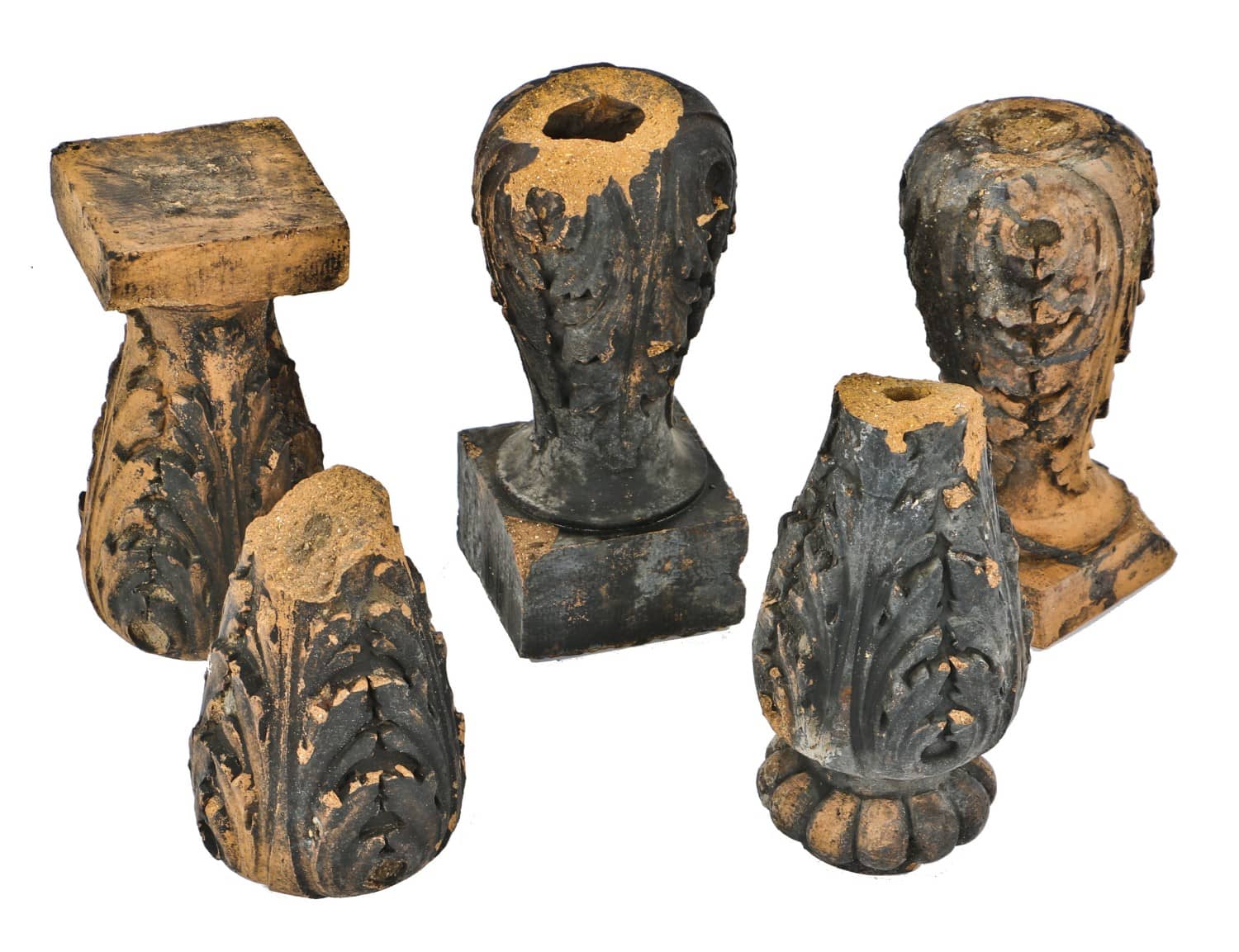former crane factory site unearthed - bottles, building materials, and basements found intact
This entry was posted on May 31 2016 by Eric

in the aftermath of a partial demolition of chicago's oldest factory building (the c. 1870 addition to the crane manufacturing company), several items have already been unearthed during excavation, with some pre-dating the factory itself.

aside from ephemera related to the business (see prior post here), artifacts include a heavily carved sandstone building facade capital (1870's), double-sheave elevator gear (from demolished crane addition facing desplaines), a remarkably intact cobalt blue, iron-pontiled william h. hutchinson glass "superior" soda bottle (likely from a privy pit belonging to a house located on the block long before the first factory building was built in 1865), and large granite pavers found nearly two feet below grade (likely added around the time the first crane factory was built on the site).


the iron pontiled soda bottle in particular suggests evidence of life in the neighborhood before richard teller crane set up his business there, as this particular variation was only produced in the early years of the 1850's.
 a closer examination of an 1857 insurance map shows the block to have been occupied by a lumberyard, an unknown factory, and several rows of houses. the bottle was situated somewhere between the factory and residences, and was likely detritus of a worker or resident during this earlier decade.
a closer examination of an 1857 insurance map shows the block to have been occupied by a lumberyard, an unknown factory, and several rows of houses. the bottle was situated somewhere between the factory and residences, and was likely detritus of a worker or resident during this earlier decade. 


the alleyway where the infamous haymarket riots occurred were covered in a thick layer of well-worn pink bricks, manufactured by the metropolitan paving brick company in canton, ohio. the area in which the bricks were produced was known for large outcrops of clarion shale, and would eventually become the "paving brick capital of the world," with nine plants manufacturing pavers. the metropolitan paving brick company was formed in 1902 by the merger of the imperial shale paving brick company and the royal brick company; they eventually controlled most of the paver production in the whole northeastern region of the state and were known nationwide as producing the best quality and most uniform product.

the bricks are rough, textured by the great weight of horse-drawn carriages which hauled hundreds of pounds of metal plumbing fixtures from crane's factory. in addition, they are virtually the only remnant from the site of the altercation between protesters and police in "crane's alley" in 1886, and thus bear a symbolic weight aside from their material one.

digging below the surface revealed even more-- a layer of oversized heavy granite pavers, over 20 inches below grade. the discovery begs the question of why the area was elevated to such a degree.


the site is mapped in the 1890's with the crane factory illustrated, and a visible statue in the background which commemorated a police officer who died in the haymarket riots.

1910 haymarket square

perhaps most notably, the excavation unearthed several impressive red sandstone capitals or endcaps with decorative acanthus leaves carved into the worn surface. the ornamental stones were likely from an 1860's-1870's commercial building once located on a neighboring block. still, the fragments are undecipherable in a sense, adding to the mystery of what or who occupied the site and surrounding area before crane manufacturing company began producing its plumbing fixtures there.

as potholing gets underway, (a total of 60 plus cassions will be required to anchor the structure being built behind and above the extant 1865 crane factory building facing jefferson street) the test holes have already exposed underground basements comprised of concrete slabs, with earlier ones consisting of limestone, along with defunct utilities and heeps of twisted metal and piles of bricks used as fill from buildings demolished long ago.

having been at several other downtown excavations as of late, i can attest to the amount of building material from chicago's earliest commercial buildings being uncovered - including stone foundations that were left in place after the great chicago fire swept through what is today known as the "burnt district." it has inspired me to add an additional chapter, or perhaps an entire section of unearthing chicago, devoted to "a city buried under a city." the quantity of actual decorative architectural elements recovered from potholing has been steadily growing. granted, most pieces are broken or in rough shape, but some artifacts from long lost buildings have survived in great shape (for instance, the terra cotta balustrade section discovered fifteen feet below the site of the howard johnson motel demolished a year ago).

as this collection of fragments from the city's buildings and earlier infrastructure continues to surface, i will try to develop a database documenting "old chicago" as it lies under the buildings that replaced it.



This entry was posted in , Miscellaneous, Salvages, Bldg. 51, Events & Announcements, New Acquisitions, Featured Posts & Bldg. 51 Feed on May 31 2016 by Eric
WORDLWIDE SHIPPING
If required, please contact an Urban Remains sales associate.
NEW PRODUCTS DAILY
Check back daily as we are constantly adding new products.
PREMIUM SUPPORT
We're here to help answer any question. Contact us anytime!
SALES & PROMOTIONS
Join our newsletter to get the latest information




































